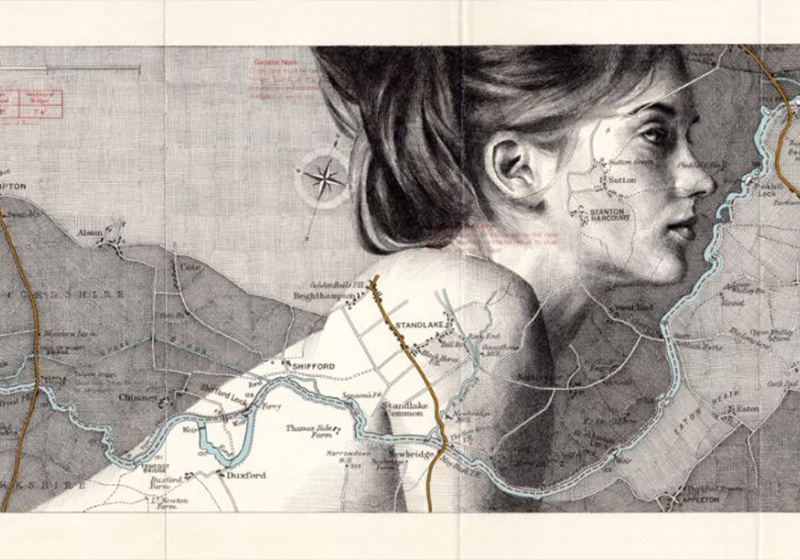Table of Contents
The geographical representation of the Earth, or a part of it, on a flat surface is called a map. A map is used to show a territory, locate objects or facilitate the construction of large infrastructures, to give a few examples. It can also indicate the altitude above sea level using contour lines. Beyond their documentary uses, old maps are a true ode to beauty. And when combined with art, the result is something else entirely.

Ed Fairburn is an artists from Southampton (United Kingdom), who uses old road maps and star charts as canvases to create other forms, usually portraits. He calls this process “topopointillism”, an invented term combining “topography” with “pointillism”: a pictorial technique of tracing small brushstrokes or dots which, when viewed from a certain distance, come together to show clearly-defined figures and landscapes through an optical illusion provided by colour harmony.
In this way, his pieces form abstract patterns which, when examined closely, coalesce into a human face as the view moves further away. The artist shades roads, alleys, rivers and mountains to resemble the contours of the face, fusing humanity with landscape in an incredible way.
The beginnings of a long-term project
Ed Fairburn specialised in illustration at the Cardiff School of Art and Design, and after graduating in 2012, he rented a studio close to home to familiarise himself with the real world. An avid collector of ephemera and other curios, while out exploring one afternoon he bought a map in a second-hand shop, not entirely sure what he was going to do with it.

“A few days later, while working on my usual portrait-based paintings and drawings, I looked at the map and wondered, “what would happen if I gave myself a set of rules to draw on this map?” he explains on his website. This was the beginning of what has become a long-term project which has now totally defined this artist’s style.
Creation process and materials used
Before starting to draw, Ed Fairburn makes an exhaustive study of the map to find similarities, patterns or “anchors”, as he calls them, which can form the figure of a face, a process which can last hours. Then, he makes gradual changes to the contours, paths and other patterns found on the map to reveal the human figure in a subtle way. The ultimate goal is for the map to appear like a portrait when it is viewed from afar. In general, the creative process can take between two days and two months, though he has some maps in his studio that he has been working on for years.

As for the materials, the artist adapts his technique depending on the surface of the map, which can be made of paper, fabric or even plastic, thin or with a rougher texture. He uses tools such as pencils, rollerball pens, fountain pens or fine modelling brushes, combined with a variety of inks, acrylics and watercolours, as well as a number of dip pens, which he collects. The oldest in his collection date from the late nineteenth century, but most come from the 1920s and 1930s.
Naturally, the master of “topopointillism” also has an immense collection of maps – more than he will ever need, as he has explained in past interviews – which he has collected over the years from second-hand shops, antique bookshops and websites. For some commissions, he looks for maps of specific locations.

Exploration of identity
Ed Fairburn’s work explores themes of identity, memory, and a sense of belonging to a place. The map is a kind of visual metaphor for the subject’s journey, while the drawings of the faces provide the human and intimate aspect. His cartographic portraits have been exhibited in galleries and museums all over the world, and can also be purchased via his website and other online stores.

